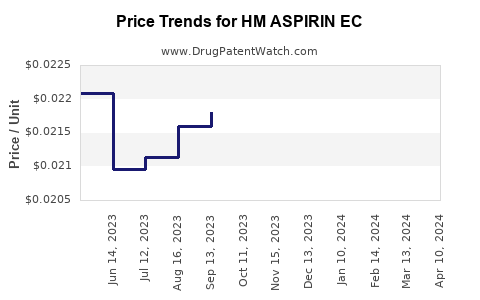Drug Price Trends for HM ASPIRIN EC
✉ Email this page to a colleague

Average Pharmacy Cost for HM ASPIRIN EC
| Drug Name | NDC | Price/Unit ($) | Unit | Date |
|---|---|---|---|---|
| HM ASPIRIN EC 81 MG TABLET | 62011-0019-01 | 0.01244 | EACH | 2024-11-20 |
| HM ASPIRIN EC 81 MG TABLET | 62011-0019-01 | 0.01411 | EACH | 2024-10-23 |
| HM ASPIRIN EC 81 MG TABLET | 62011-0019-02 | 0.01452 | EACH | 2024-09-18 |
| HM ASPIRIN EC 81 MG TABLET | 62011-0019-01 | 0.01452 | EACH | 2024-09-18 |
| HM ASPIRIN EC 81 MG TABLET | 62011-0019-01 | 0.01539 | EACH | 2024-08-21 |
| HM ASPIRIN EC 81 MG TABLET | 62011-0019-02 | 0.01539 | EACH | 2024-08-21 |
| >Drug Name | >NDC | >Price/Unit ($) | >Unit | >Date |


